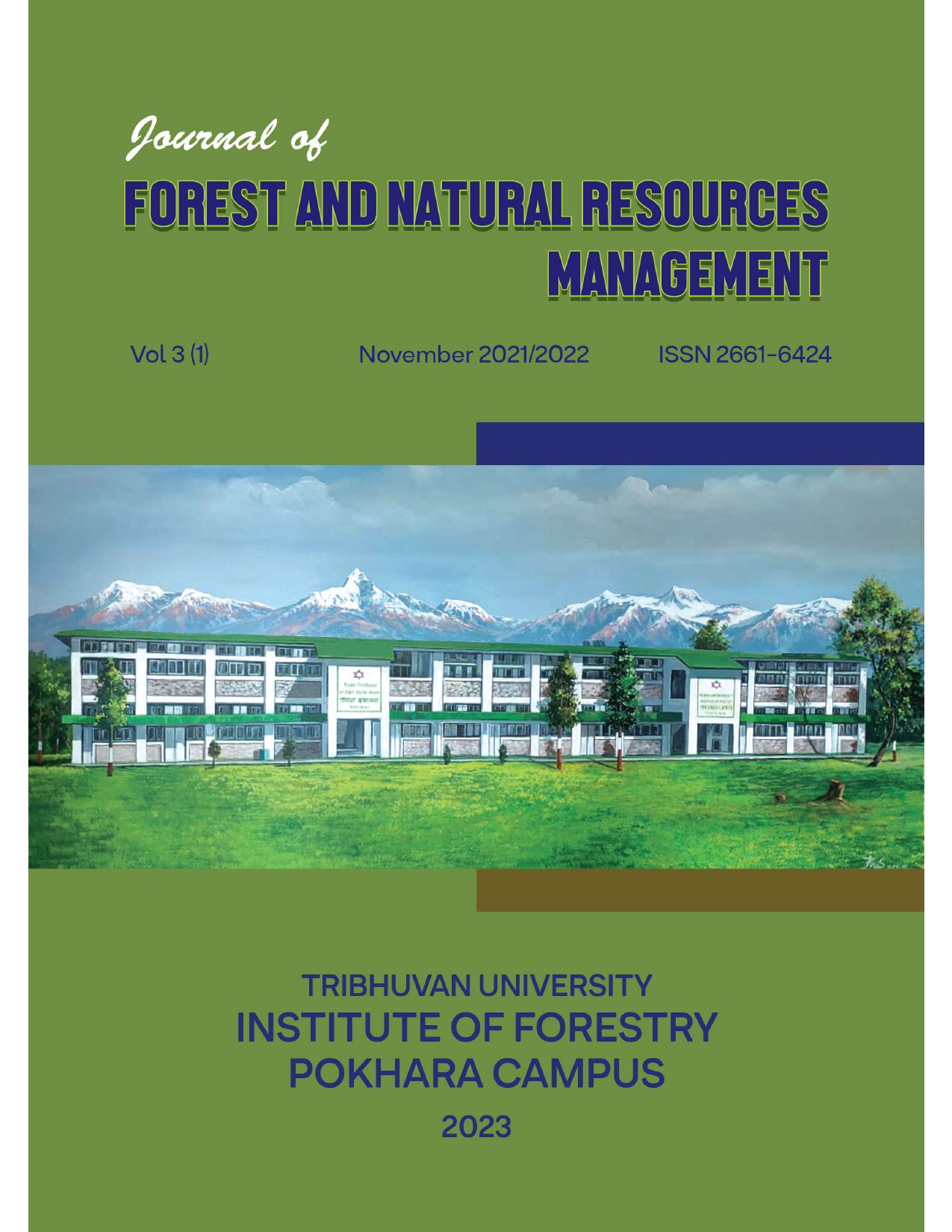Wetland Mapping and Monitoring with Sentinel-1 and Sentinel-2 Data on the Google Earth Engine
DOI:
https://doi.org/10.3126/jfnrm.v3i1.60107Keywords:
Google Earth Engine, Sentinel-1, Sentinel-2, Random Forest ClassifierAbstract
Wetlands are one of the most valuable ecosystems on the Earth for both humans and nature. Large-scale of wetlands have been transformed into agriculture and urban region in response to human demands and requirements. Accurate mapping and monitoring of large-scale wetlands are of high importance but also challenging. The growing availability of large volumes of open-access satellite data and development of advanced machine-learning algorithms has been providing new opportunities for mapping and monitoring earth system and environment. Google Earth Engine (GEE)- a cloud-based computing platform, has been effectively applied in various areas of mapping ranging from forestry, agriculture, hydrological studies. This study uses high spatial resolution satellite data from Sentinel-1, Sentinel-2 and terrain indices for mapping and monitoring of wetlands of Pokhara Metropolitan city of central Nepal. We implemented different types of wetland classification models on the GEE platform using the Random Forest (RF) classifier. The model with lowest out-of-bag error was chosen as the final model for the preparation of the final classified wetland map. The overall accuracy and kappa coefficient of the classified map were 98% and 0.97 respectively. The study demonstrated the possibility of rapid monitoring of wetlands and other land characteristics using the Google Earth Engine platform.
Downloads
Downloads
Published
How to Cite
Issue
Section
License
© Institute of Forestry, Pokhara Campus




